Why Disinfect Your Car? Because Your Steering Wheel is Dirtier than a Toilet Seat
People tend to do a better job keeping their car exterior cleaner than the interior. That can be a problem when we are talking about microscopic pathogen particles. Even if you do a good job keeping your car neat, those invisible germs can build up if not removed.
A study published by Ashton University Found that a typical steering wheel could have 700 different types of bacteria, where a toilet seat only has 60 different types.
Your Steering Wheel vs a Toilet Seat
A Steering Wheel can Harbor 700 different types of Bacteria, a toilet seat, a mere 60.
What other surfaces in your CAR might be dirty and how do they become so contaminated?
Its those surfaces that are frequently touched, i.e. seatbelts, door handles, cup holders, shifter, control knobs, and touch panels are typically the worst.
Eating in the car: Crumbs are food for bacteria: Most of us eat in our car occasionally, and if you have children, probably quite frequently. Food particles can help bacteria proliferate even faster, so consider disinfecting more frequently.
While many of us are concerned about the corona virus, in our cars we should be more worried about bacterial pathogens. You see, unlike viruses that will not multiply on surfaces and die off, Bacterial pathogens are living cells that can grow exponentially on surfaces.
How do I disinfectant my car?
First, let’s start with certain products that should be avoided when disinfecting your car.
- AVOID products containing bleach. While diluted bleach solutions maybe safe, we all know that bleach can be hard on surfaces and can damage fabrics.
- AVOID alcohol based products: Alcohol wipes and disinfectants that use alcohol as the main germ killing ingredient can be hard on touch panels and other sensitive surfaces in a car.
Understanding the disinfecting Process: Cleaning vs Disinfecting
When you clean a surface inside your car you most likely use a trigger spray bottle to spray the surfaces and then wipe with a cloth or paper towel until the surface is dry. That’s cleaning, NOT Disinfecting.
Disinfectants don’t kill germs instantly, so surfaces need to be left visibly moist and allowed to air dry to kill the germs that might be residing on surfaces. All disinfectants have a wet contact time, usually from 1-10 minutes. If using a trigger sprayer, consider spraying the disinfecting solution on a lint free microfiber towel or disposable cloth, then wiping the surface. This is a better and more effective way to insure surfaces don’t get missed.
DO’s and DON’T ‘s of Disinfecting Your Car
DO use a lint free cloth, microfiber cloths work the best.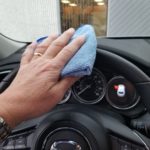
DON’T use bleach or alcohol based products as they can damage some surfaces.
DO use a disinfectant that has little or no solvent and is safe on all the interior surfaces in a vehicle. See below for recommendations.
DON’T Spray Surfaces Directly, rather spray the cloth with sufficient disinfectant so that when you wipe the surface it stays visibly moist. This is especially important for touch screens and instrument panels.
DO focus on the surfaces most likely to harbor pathogens, steering wheels, seat belts, door handles, cup holders, control knobs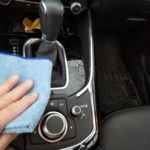 , and touch panels.
, and touch panels.
DON’T disinfectant a hot car or one sitting in the sun, the disinfectant solution will dry too fast and will not be effective.
DO leave the surface visibly moist to insure an appropriate contact time.
DON’T Use disinfectants on windshields unless you follow the process by cleaning with a glass cleaner.
Products for Disinfecting Your Car
Peroxi-Cide Ready to Use Disinfectant Cleaner with Hydrogen Peroxide. Solvent Free. More Info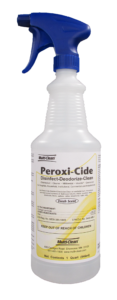
128 E-Fecticide Concentrated Disinfectant Cleaner Safe for all Interior Surfaces. Solvent Free. More Info
64 Millennium Q Concentrated Disinfectant Cleaner, Safe for all interior surfaces. Solvent Free. More Info
One Shot Century Q, makes 1 qt of disinfectant cleaner using your own water. Solvent Free. More Info
Would you like more information, please fill out the form or visit us at multi-clean.com



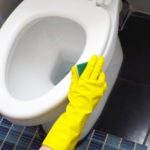
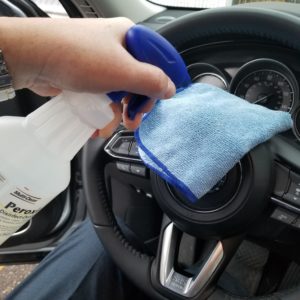
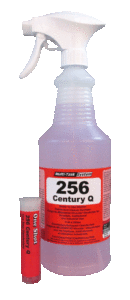

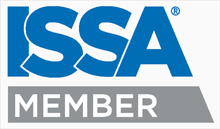
We should clean our car regularly, especially in this pandemic where we have to be safe everyday. Disinfecting is a must to avoid the virus. Thank you for sharing this article!